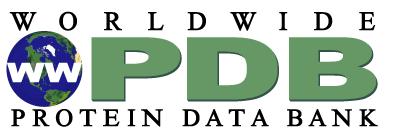Molecule of the Month: Cholera Toxin
Many bacterial toxins have two parts: one that finds a cell, the other that kills it

Building a Deadly Toxin
The second deadly strategy is to use a toxic enzyme instead of a chemical poison. Enzymes are designed to perform their reactions over and over again, hopping from target to target and making their chemical changes. Thus, one enzyme can modify a whole cell full of molecules. Cholera uses this strategy once it gets inside cells. The toxic portion hops from molecule to molecule, disabling each one in turn, until the entire cell is killed.
Cholera Toxin in Action

Terrible Toxins
Exploring the Structure
Cholera Toxin and ARF

Cholera toxin, shown in PDB entry 1xtc, attacks intestinal cells to cause life-threatening dehydration. It contains two subunits: A (shown in blue) includes the toxic enzyme portion (A1 chain) and the linker (A2 chain), and subunit B (shown in turquoise) includes the carbohydrate-binding portion. When the toxin binds to a cell, the disulfide bridge (shown in yellow) that connects the two chains of the A subunit is then broken, releasing the toxic portion (shown in light blue) into the cell. The structure on the right (PDB entry 2a5f) shows that when the A1 chain binds to the ARF6 protein (shown in orange, with a bound GTP), the toxin’s catalytic loops (shown in yellow) undergo conformational changes and NAD+ (shown in green) binds to the active site. The activated A1 subunit can then attach an ADP group to permanently activate a G-protein.
Select the JSmol tab to explore these structures in an interactive view.
This JSmol was designed and illustrated by Xinyi Christine Zhang.
Related PDB-101 Resources
- Browse Toxins and Poisons
- Browse Infectious Disease
References
- R.-G. Zhang, D. L. Scott, M. L. Westbrook, S. Nance, B. D. Spangler, G. G. Shipley and E. M. Westbrook. (1995) The Three-Dimensional Crystal Structure of Cholera Toxin. Journal of Molecular Biology 251, 563-573.
- T. K. Sixma, S. E. Pronk, K. H. Kalk, B. A. M. vanZanten, A. M. Berghuis, W. G. J. Hol. (1992) Lactose Binding to Heat-Labile Enterotoxin Revealed by X-ray Crystallography. Nature 355, 561-564.
September 2005, David Goodsell
http://doi.org/10.2210/rcsb_pdb/mom_2005_9


